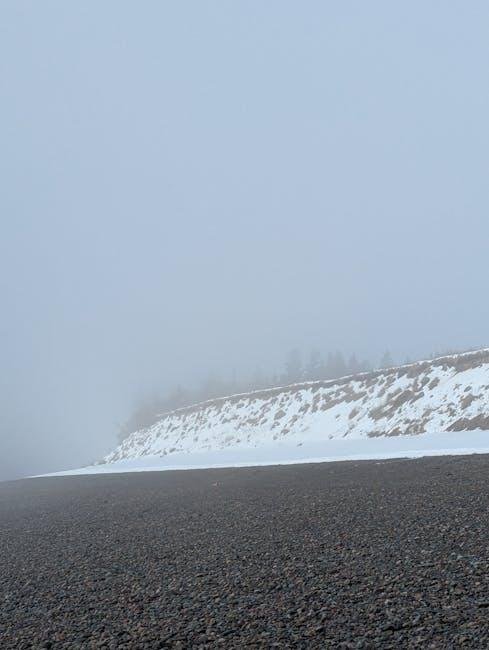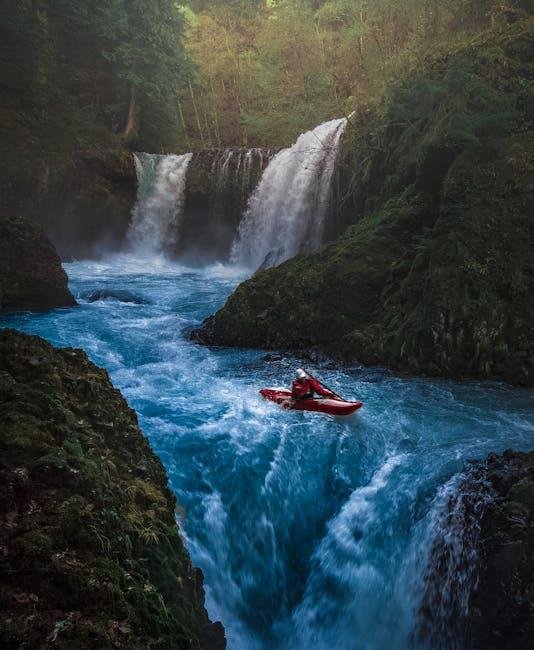As the sun dips low on the horizon and the air grows crisp, adventurers don their paddles, drawn to the serene allure of cold waters. Though, what begins as an exhilarating expedition can swiftly turn perilous if the chilling embrace of hypothermia sets in.Understanding the nuances of this silent but perilous condition is crucial for anyone venturing into frigid realms. In this article, we’ll explore practical strategies for recognizing the early signs of hypothermia, implementing safety measures while paddling, and ensuring that your exhilarating journeys remain safe and enjoyable. Armed with knowledge and readiness, you can embrace the thrill of the outdoors without fear of succumbing to the cold’s unexpected grasp.
Understanding Hypothermia: Signs,Symptoms,and Risks
Hypothermia can sneak up on anyone who spends extended time in cold environments,particularly during cold-water paddles. Initial signs often include shivering, which is the body’s natural response to generate heat. As the condition progresses, shivering may cease, indicating a dangerous drop in core body temperature.Other early symptoms can show up in various forms and may include:
- Confusion or cognitive impairment
- Fatigue or lethargy
- Slurred speech or difficulty articulating words
- Weak pulse or slow heart rate
If left unchecked,hypothermia poses serious risks,including organ failure and even death. As the situation deteriorates, victims may exhibit a lack of coordination and have difficulty moving, which can exacerbate their condition if they attempt to paddle or maneuver in the water. Understanding the critical signs can be the difference between life and death.Below is a table summarizing the stages of hypothermia and their corresponding symptoms:
| Stage | Core Temperature Range | Symptoms |
|---|---|---|
| Mild Hypothermia | 50°F to 60°F (10°C to 15.5°C) | Shivering,confusion,lack of coordination |
| Moderate Hypothermia | 60°F to 70°F (15.5°C to 21°C) | Shivering stops, slurred speech, slow heart rate |
| Severe Hypothermia | Below 50°F (10°C) | Unconsciousness, weak or absent pulse, possible death |

Preparation Essentials for Cold-Water Paddling Adventures
Embarking on a cold-water paddling adventure requires meticulous preparation to mitigate risks like hypothermia.First and foremost, investing in appropriate gear is critical. Consider the following essentials:
- Wetsuit or Dry Suit: Opt for a quality, well-fitted wetsuit or a dry suit that provides insulation and protects against wind and water.
- Layered Clothing: Use moisture-wicking base layers to keep sweat away from your body and insulating mid-layers to retain heat.
- Footwear: Choose waterproof boots with good traction to prevent slipping and keep your feet warm.
- Personal Flotation Device (PFD): Wear a high-quality PFD that is agreeable and allows for mobility, ensuring you remain buoyant if you capsize.
Along with gear, maintain awareness of weather conditions and body signals during your paddle.Before heading out, create a pre-paddle checklist to include:
- Weather Report: Always check the forecast for temperature fluctuations and potential storms.
- Emergency Kit: Carry a complete kit including a whistle, flashlight, waterproof matches, and a space blanket.
- Hydration and Nutrition: Pack high-energy snacks and maintain hydration to keep your body functioning optimally.
- Warm Recovery Plan: Establish a plan for warming up after a paddle, including dry clothes and a warm drink as soon as you return to shore.

Effective Techniques for Preventing Heat Loss
To maintain warmth during cold-water paddling, it is crucial to employ various strategies that effectively minimize heat loss. One of the most significant factors is the choice of clothing; wearing layers of moisture-wicking fabrics helps to trap body heat while repelling water. consider incorporating the following items into your paddling attire:
- Neoprene or drysuits: These create a protective barrier against cold water and keep warmth close to the body.
- Insulating layers: Fleece or wool garments serve as excellent insulation, even when wet.
- Waterproof outer layers: A good quality waterproof jacket can shield against wind and rain,preventing chilling effects.
Additionally, tactical paddling techniques can significantly affect how heat is conserved during your outing. Adopting a faster cadence or engaging in short bursts of energetic activity can generate heat and stave off chill. It’s also vital to stay aware of your surroundings and watch for signs of hypothermia in yourself and your companions, as early detection aids in implementing preventive measures. Here’s a concise guide to recognizing hypothermia symptoms:
| Symptom | Action |
|---|---|
| Shivering | Increase insulation promptly. |
| Confusion | Seek shelter and warm fluids. |
| Slurred Speech | Get help and avoid further exposure. |

Rescue and Recovery strategies in Hypothermia Situations
When confronted with a hypothermia situation during cold-water paddles, immediate action is essential. Assess the victim’s condition before taking any rescue steps. Focus on the following critical strategies to aid recovery:
- Get out of the water: move the person to a dry, warm location as soon as possible to prevent further heat loss.
- Remove wet clothing: Carefully strip away any wet garments to allow body heat to be retained or regained.
- Wrap in warm blankets: Use insulating materials such as blankets, sleeping bags, or towels to cocoon the individual.
- Provide warm beverages: If the person is conscious and able to swallow, offer warm, non-alcoholic drinks to help raise body temperature.
- Monitor vital signs: Keep a constant watch on the individual’s breathing and heart rate, ready to act if any changes occur.
In addition to these methods, it is crucial to understand the stages of hypothermia. Here’s a quick reference table that categorizes the symptoms and recommended actions:
| Hypothermia Stage | Symptoms | Response Action |
|---|---|---|
| Mild | Shivering,confusion | Warm up and rehydrate |
| Moderate | Increased confusion,decreased shivering | Seek medical help immediately |
| Severe | Absence of shivering,unconsciousness | Call emergency services,provide CPR if needed |
These strategies are vital in providing immediate care to someone suffering from hypothermia,enhancing the chances of recovery and survival. Always remain vigilant during cold-water paddles and equip yourself with the knowledge to respond effectively.
Future Outlook
As we conclude our exploration of hypothermia management during cold-water paddles, it’s essential to remember that preparation is your best ally.Armed with knowledge, proper gear, and a keen awareness of the signs of hypothermia, you can transform a possibly perilous situation into a safe and enjoyable adventure on the water. Embracing the cold doesn’t have to mean facing its dangers unprepared. Rather, it can be an exhilarating journey, enriched by the beauty of nature and the camaraderie of fellow paddlers.
By prioritizing safety and being vigilant about the conditions around you, every stroke of your paddle can echo with confidence.So, as you embark on your next cold-water expedition, take these insights to heart, respect the elements, and let the thrill of exploration carry you forward.Safe paddling, and may your adventures be both unforgettable and secure!
